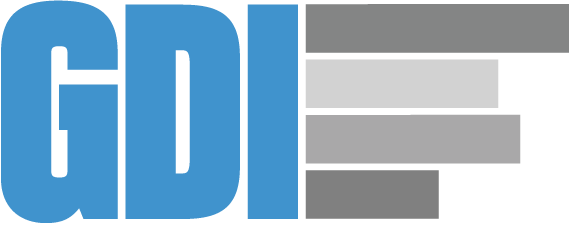Q75.
How common is it for defence acquisition decisions to be based on political influence by selling nations?
75a. Prevalence: selling nations
Score
SCORE: NS/100
Rubric
Uganda score: NS/100
Score: 0/100
It is extremely common for defence decisions to be driven by political influence by seller nations.
Score: 50/100
Some acquisitions are granted as a result of political influence by seller nations, but this is not extremely common.
Score: 75/100
This indicator is not scored. Please discuss conditions in the country context related to good practice (Score 4).
Score: 100/100
Almost no acquisitions are granted as a result of political influence by selling nations.
Assessor Explanation
Assessor Sources
75b. Justification
Score
SCORE: NS/100
Rubric
Uganda score: NS/100
Score: 0/100
The government is unlikely to justify military procurement by referring to military need, and may not justify its defence and security expenditure at all.
Score: 50/100
The government may sometimes justify purchases by referring to military need.
Score: 75/100
This indicator is not scored. Please discuss conditions in the country context related to good practice (Score 4).
Score: 100/100
The government cites clear and justifiable military need for purchases and from particular supplier.
Assessor Explanation
Assessor Sources
75c. Prevalence: domestic pressures
Score
SCORE: NS/100
Rubric
Uganda score: NS/100
Score: 0/100
It is extremely common for defence decisions to be driven by domestic political pressures.
Score: 50/100
Some acquisitions are granted as a result of domestic political pressures, but this is not extremely common.
Score: 75/100
This indicator is not scored. Please discuss conditions in the country context related to good practice (Score 4).
Score: 100/100
Almost no acquisitions are granted as a result of domestic political pressures.
Assessor Explanation
Assessor Sources
Compare scores by country
Please view this page on a larger screen for the full stats.
| Country |
75a. Prevalence: selling nations |
75b. Justification |
75c. Prevalence: domestic pressures |
|---|---|---|---|
| Albania | NS | NS | NS |
| Algeria | NS | NS | NS |
| Angola | NS | NS | NS |
| Argentina | NS | NS | NS |
| Armenia | NS | NS | NS |
| Australia | NS | NS | NS |
| Azerbaijan | NS | NS | NS |
| Bahrain | NS | NS | NS |
| Bangladesh | NS | NS | NS |
| Belgium | NS | NS | NS |
| Bosnia and Herzegovina | NS | NS | NS |
| Botswana | NS | NS | NS |
| Brazil | NS | NS | NS |
| Burkina Faso | NS | NS | NS |
| Cameroon | NS | NS | NS |
| Canada | NS | NS | NS |
| Chile | NS | NS | NS |
| China | NS | NS | NS |
| Colombia | NS | NS | NS |
| Cote d'Ivoire | NS | NS | NS |
| Denmark | NS | NS | NS |
| Egypt | NS | NS | NS |
| Estonia | NS | NS | NS |
| Finland | NS | NS | NS |
| France | NS | NS | NS |
| Germany | NS | NS | NS |
| Ghana | NS | NS | NS |
| Greece | NS | NS | NS |
| Hungary | NS | NS | NS |
| India | NS | NS | NS |
| Indonesia | NS | NS | NS |
| Iran | NS | NS | NS |
| Iraq | NS | NS | NS |
| Israel | NS | NS | NS |
| Italy | NS | NS | NS |
| Japan | NS | NS | NS |
| Jordan | NS | NS | NS |
| Kenya | NS | NS | NS |
| Kosovo | NS | NS | NS |
| Kuwait | NS | NS | NS |
| Latvia | NS | NS | NS |
| Lebanon | NS | NS | NS |
| Lithuania | NS | NS | NS |
| Malaysia | NS | NS | NS |
| Mali | NS | NS | NS |
| Mexico | NS | NS | NS |
| Montenegro | NS | NS | NS |
| Morocco | NS | NS | NS |
| Myanmar | NS | NS | NS |
| Netherlands | NS | NS | NS |
| New Zealand | NS | NS | NS |
| Niger | NS | NS | NS |
| Nigeria | NS | NS | NS |
| North Macedonia | NS | NS | NS |
| Norway | NS | NS | NS |
| Oman | NS | NS | NS |
| Palestine | NS | NS | NS |
| Philippines | NS | NS | NS |
| Poland | NS | NS | NS |
| Portugal | NS | NS | NS |
| Qatar | NS | NS | NS |
| Russia | NS | NS | NS |
| Saudi Arabia | NS | NS | NS |
| Serbia | NS | NS | NS |
| Singapore | NS | NS | NS |
| South Africa | NS | NS | NS |
| South Korea | NS | NS | NS |
| South Sudan | NS | NS | NS |
| Spain | NS | NS | NS |
| Sudan | NS | NS | NS |
| Sweden | NS | NS | NS |
| Switzerland | NS | NS | NS |
| Taiwan | NS | NS | NS |
| Tanzania | NS | NS | NS |
| Thailand | NS | NS | NS |
| Tunisia | NS | NS | NS |
| Turkey | NS | NS | NS |
| Uganda | NS | NS | NS |
| Ukraine | NS | NS | NS |
| United Arab Emirates | NS | NS | NS |
| United Kingdom | NS | NS | NS |
| United States | NS | NS | NS |
| Venezuela | NS | NS | NS |
| Zimbabwe | NS | NS | NS |


